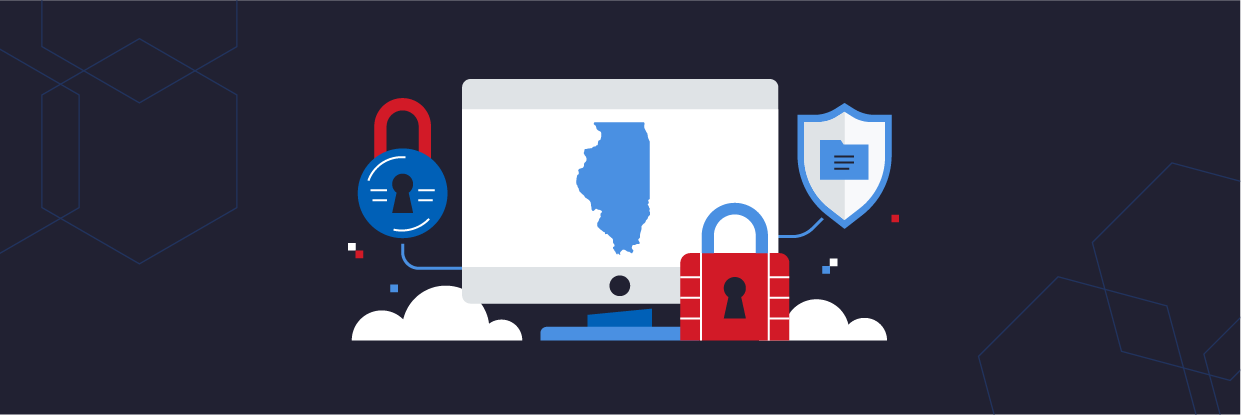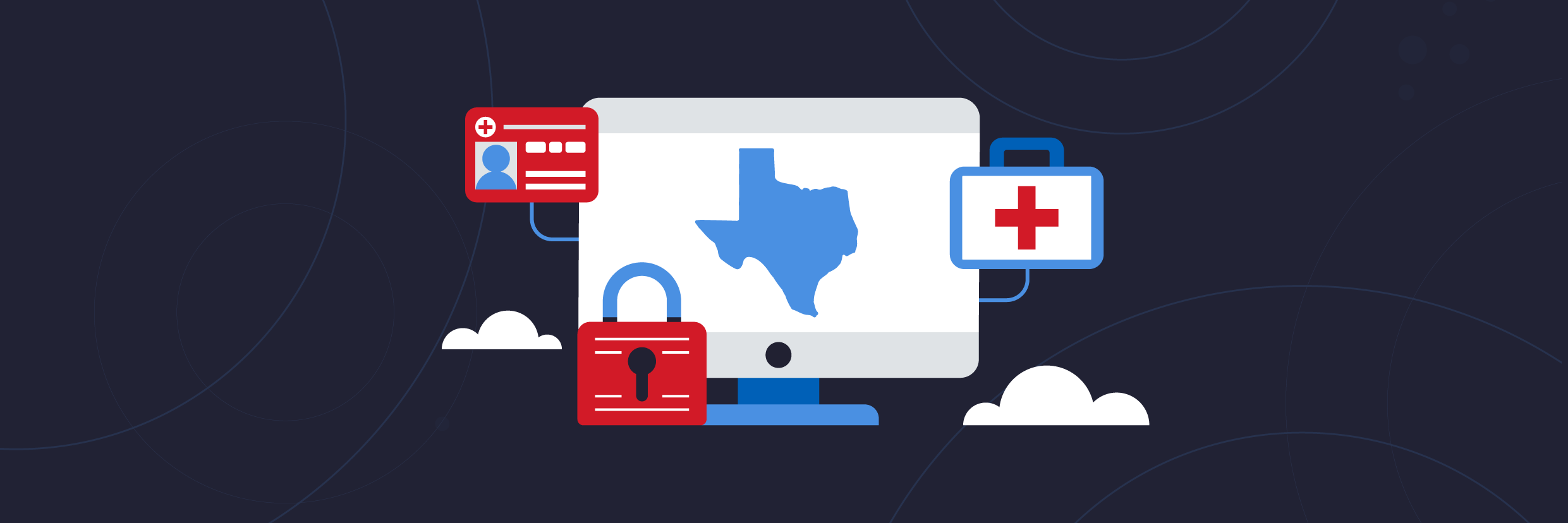No matter what industry you work in, chances are you handle sensitive information. Whether it involves customers, vendors, government agencies, or third parties, data such as social security numbers and medical records are generated, stored, and transmitted every second of every day. Keeping private information private can be a considerable challenge, which is why many organizations today perform a privacy impact assessment (PIA).
PIA is a leading risk assessment procedure that scrutinizes processes within a project or information system to determine how changes in your business operations might affect your ability to safeguard private or confidential information. Among the ways to address privacy risks, a PIA provides feedback on any significant gaps in the privacy department, including compliance, risk management, and data security.
Download the full Varonis PIA cheatsheet
In this article, we will dive deeper into PIAs so that you understand the ins and outs, and how to successfully implement this assessment in your business for a robust privacy program.
- What is a privacy impact assessment?
- Purpose of a PIA
- When to conduct a PIA
- PIA implementation
- Benefits of a PIA
What is a privacy impact assessment?
This assessment is mainly conducted by organizations with extensive access to personally identifiable information (PII), loosely defined as sensitive data that can be used to track or identify a person. This data includes a person's full name, phone number, medical records, IDs, government info, and email address. And while a PIA is a formally structured process, it can be scaled up or down based on each organization’s needs, capabilities, and information system.
Most organizations today gather PII in the form of customer data and use that information throughout specific processes. Having extensive amounts of PII is risky — not just for the projects themselves but the entire organization. Leaving sensitive data exposed to risks can lead to significant problems that are challenging to recover from, such as data breaches and theft.
Employing a PIA can mitigate or even completely prevent these risks from jeopardizing your business and significantly enhance privacy protections. Every initiative by an organization will most likely involve PII throughout its lifecycle. Therefore, starting with a PIA can help you identify what PII will be processed, how it will be processed, and how it can affect the initiative and all involved parties.
Moreover, a PIA also allows you to make necessary adjustments and address all potential threats. A PIA promotes the protection of personal data and the prevention of risks from negatively affecting any organization's initiative.
What is the purpose of a privacy impact assessment?
A PIA promotes mindfulness of data security among all units within your organization and helps address risks associated with sensitive information. Essentially, a PIA allows you to evaluate your business from a privacy standpoint and improve your approach to data privacy.
Data is the most crucial asset of an organization, which means protecting it is vital. A PIA is an excellent tool in an organization’s security toolbox because it offers immense data risk management capabilities. You can also view a PIA as the formalization of processes that should already be taking place, such as assessing the privacy impact of new vendors, technologies, or personnel.
Another primary purpose of a PIA is regulatory compliance. This assessment aids your organization in aligning processes, initiatives, products, and all your business assets with local and international data privacy standards and protection requirements. This includes the General Data Protection Regulation (GDPR), Health Insurance Portability and Accountability Act (HIPAA), and Risk Management Framework (RMF). An effective PIA will identify and address privacy risks and ensure compliance with established data privacy standards.
When should I conduct a privacy impact assessment?
Recent 2022 data breach statistics showed us that privacy security risks are running rampant and the need for solutions such as a PIA is higher than ever. Thus, a PIA is recommended in all procedures involving sensitive data to ensure these risks are mitigated and that regulatory compliance is achieved at all times.
Organizations should also conduct a PIA when developing, improving, and releasing a new product or service. Because PII plays a heavy role in all the processes mentioned above, a PIA is required to foster transparency in terms of the approach to data processing and security measures. Moreover, a PIA needs to be conducted if you want to ensure compliance with specific regulations concerning your initiative.
How do I implement a privacy impact assessment?
Implementing a PIA is a daunting task that requires uniting all parties and aligning their efforts with your security goals. Approaches will differ from organization to organization depending on circumstance, however, there are steps all successful PIAs have in common that you can use to shape your own PIA approach.
1. Determine the need for a PIA in a project.
Assess whether your project involves personally identifiable information. If so, a PIA is necessary to protect the project and ensure you won't face any privacy issues. When determining the need for a PIA, consider what types of PII you handle and which regulatory frameworks might be applicable.
2. Plan and scope the PIA.
Planning your PIA includes processes such as data analysis, understanding the scope of your project, and consulting with government and security agencies. There are also external factors to consider when planning your PIA, such as budget and timeframes. Identifying all vital information before conducting your PIA ensures mishaps are mitigated along the way.
3. Identify and coordinate with all parties involved.
This may involve stakeholders, security agencies, IT teams, the CIO, human resources, and your organization's employees. Collaboration is a crucial element in data and information system security, and identifying key players in a project enables streamlined communication.
4. Outline the informational flow.
Determine the flow of PII throughout your project. Identify what data will be gathered, what will be processed, and how you will use it in the project. Doing so can better protect sensitive data within your information technology stack.
5. Conduct privacy risk and compliance checks.
Thoroughly identify potential privacy risks and assess how they can affect your project. Run compliance checks to ensure every procedure in your project's lifecycle is compliant with established security regulations. Familiarize yourself with relevant government PII regulations, like the E-Government Act of 2002, which established PII rights for consumers.
6. Identify possible strategies to mitigate identified risks.
After identifying privacy risks, collaborate with your key players to determine strategies for safeguarding your data and electronic system. Regulatory compliance should also be kept in mind when forming these solutions.
7. Develop a PIA report.
Summarize all PIA findings in a concise report for your CIO and other key parties. PIA report templates exist online, and you can replicate them in your overall reporting system. This step allows all key project players to view important information and provide alternative recommendations.
8. Address the risks and monitor PIA performance.
Implement the strategies you built out and monitor their performance. A PIA is a continuous process; therefore, its performance should be constantly reevaluated post-implementation. Assess whether your plans are working and make any necessary adjustments.
What are the benefits of a PIA?
PIA is a high-value cybersecurity practice that provides many helpful security and information technology benefits. But it’s also worth mentioning that it is not the only privacy solution that exists. Depending on your requirements and specifications, you might want to consider an alternative option that will protect PII. Below are a few key benefits a PIA offers to help you choose whether this is the right solution for you.
1. Compliance assurance
A PIA ensures you comply with privacy frameworks, data security standards, and any relevant privacy act. Whether it’s GDPR, HIPAA, FOIA or CCPA, conducting a PIA will be a crucial part of your ongoing compliance efforts. Conducting a PIA helps you avoid breaches and potential compliance violations.
2. Risk management
A PIA will help spot any gaps in how you protect private data and provide steps you can take to remediate gaps in your electronic system and information technology stack. With a PIA, you’ll be better able to find and mitigate data and information system risks like insider threats or poor access controls.
3. Security culture
Conducting a PIA often promotes security mindfulness within your organization and fosters a privacy-centric environment. Coordinating with human resources and your internal privacy officers to conduct a PIA alongside internal training is a great way to improve your cybersecurity culture.
4. Improved analytics
A PIA can also provide your business with more data and analytics to better inform cybersecurity decision-making. Disseminating post-assessment results to your CIO and privacy office will highlight gaps, showcase model scenarios, and help your team decide where to allocate resources.
5. Customer relations
Completing a PIA proves your organization takes privacy seriously, and it also improves your general support system. Customers, clients, and partners will be more confident doing business with you when they know you have an adequate tracking system in place and their PII is handled responsibly.
6. Loss prevention
Whether regulatory fines or reputational damage, a PII breach can be immensely damaging. Conducting a PIA will help you spot potential vulnerabilities so you can remediate them before any damage is done.
Using a PIA to bolster your data security
Employing a PIA aids organizations in their mission to achieve compliance, address vulnerabilities, and promote data security mindfulness. As one of the leading data security solutions currently available, a PIA is a great tool to have in your organization’s cybersecurity arsenal to help you prevent any damage caused by privacy risks in your IT system.
Moreover, complementing your PIA with tools allowing effective data oversight provides a robust cybersecurity approach. An experienced and security-oriented collaborator such as Varonis can ensure a successful PIA for your organization and guarantee the achievement of your data privacy goals.
What should I do now?
Below are three ways you can continue your journey to reduce data risk at your company:
Schedule a demo with us to see Varonis in action. We'll personalize the session to your org's data security needs and answer any questions.
See a sample of our Data Risk Assessment and learn the risks that could be lingering in your environment. Varonis' DRA is completely free and offers a clear path to automated remediation.
Follow us on LinkedIn, YouTube, and X (Twitter) for bite-sized insights on all things data security, including DSPM, threat detection, AI security, and more.







